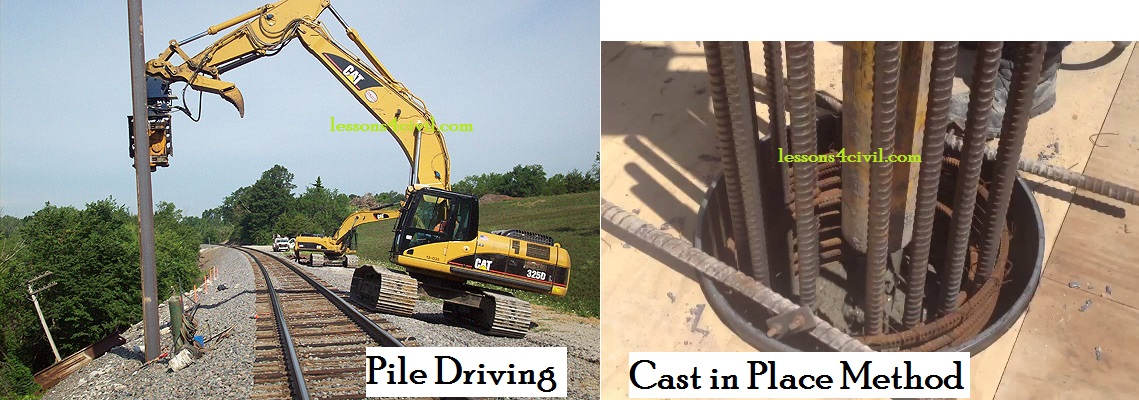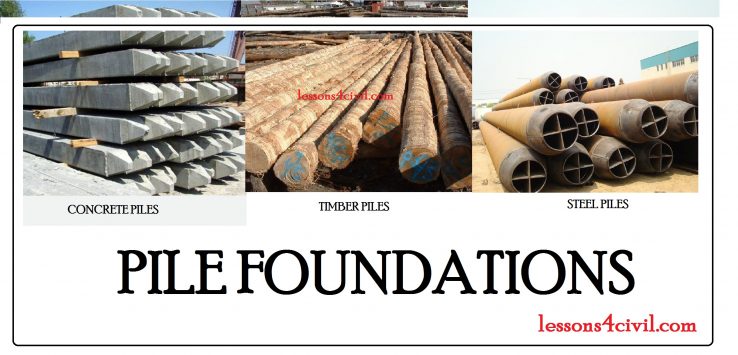Pile Foundations
Pile foundations can be categorized based on different factors such as construction method, materials and loading transfer mechanism. In this article, the first 2 item will be explained, and the soil pile interaction is covered in another post.
Pile materials
Pile can be constructed with a wide range of material such as concrete, timber, composite and steel. Each material has its own advantages and drawbacks.
Concrete piles
One of the most frequently used materials in pile construction is concrete . Concrete piles might be constructed in factory, or cast in place. Using steel reinforcement can make the piles stronger to achieve a higher bending stiffness. This reinforcement provide sufficient resistance against vertical loads as well as tension forces.
High load capacity, high bending stiffness and easy procedure of construction are main advantages of concrete deep foundations. But it is noteworthy that concrete has also some disadvantages such as high initial cost, corrosion and large dimensions.
Steel piles
Talking about widely used materials, steel comes second in the list. As other steel structures, they are easy to construct and splice. High bending capacity and lightness are other advantages. On the other hand, as they are vulnerable to corrosion, some considerations, such as cathodic protection, must be taken to protect them.
Timber piles
However timber is cheaper than other material but its disadvantage and limitations are overwhelming. For example they are difficult to splice and easily damaged. Depending on the climate condition, they might need to be treated by preservatives to avoid decomposition.
Pile construction methods
steel and precast concrete piles can be driven into loose soils by impact of a heavy hammer. Concrete pile can also be cast in cast in place. In cast in place process, steel reinforcement is placed insides a bored hole. Next concrete mixture fills the hole to shape the body of the pile.

Pile construction methods



Comments